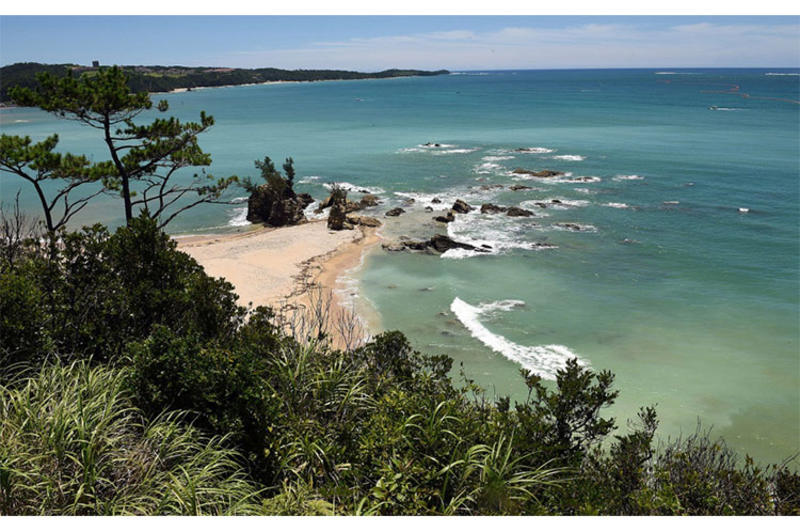Japan mulls subsidies to areas near planned Okinawa Marine runway

A beach on Oura Bay, Okinawa, where construction of a controversial new runway resumed on Tuesday, Dec. 27, 2016.
By Erik Slavin and Hana Kusumoto | Stars and Stripes November 30, 2015
TOKYO — Three districts near the construction site of a contentious Marine runway in Okinawa will receive direct federal subsidies of a yet-to-be-determined amount in what may be a government bid to soften protests over the project.
Subsidies are nothing new for the island of 1.4 million, which has long received federal payments for its role as the home to the largest share of U.S. forces in Japan. However, this time the money is going directly to smaller communities around Camp Schwab, where a major protest campaign has continued since 2013, when Japan obtained a key permit for the runway’s construction.
The funding could Japanese media outlets speculated that the government hopes the direct funding to districts will soften protests over the runway.
“It will be possible to directly aid [the districts], which will be affected directly the most from the relocation work, with projects that help preserve the living environment and stability of the residents’ lifestyle and reduce the effects of the U.S. military realignment,” Defense Minister Gen Nakatani told reporters Friday, according to a transcript.
Henoko, Toyohara and Kushi will each receive up to 13 million yen ($106,000) this fiscal year from Japan’s defense budget, government officials said Friday. The federal government would like to continue the subsidy beyond this year, but where that money will come from — and how much — remains undecided in advance of future year budget talks, officials said.
The money comes despite Okinawa Gov. Takeshi Onaga’s attempts to stop construction of the runway, which is designed to help transport Marines stationed on the island to various missions in the Asia-Pacific region.
The runway over Oura Bay would replace Marine Corps Air Station Futenma, which is located in what has become a densely populated part of central Okinawa. A 2004 helicopter crash at an Okinawa university near the base increased calls for the closure of the Futenma air base.
The Camp Schwab site is in a more rural area, but protesters want the Marine base to be removed from the island entirely, citing the large concentration of U.S. forces there and the environmental impact to the bay.
The runway is part of a larger Asia-Pacific realignment agreement between Japan and the U.S. that would also move thousands of Marines to Guam to lessen the load on Okinawa.
Japanese media outlets speculated that the government hopes the direct funding to districts will soften protests over the runway.
In 2013, Okinawa Gov. Hirokazu Nakaima agreed to sign off on a landfill permit for the Camp Schwab runway after the Japanese government agreed to added funding for islandwide capital improvements and a university.
But Onaga, the former mayor of Naha who easily defeated Nakaima at the polls in 2014, revoked a landfill permit last month necessary for runway construction to move forward, despite an order from the Japanese government to stand down.
On Nov. 17, the Japanese government filed suit to revoke Onaga’s move.



